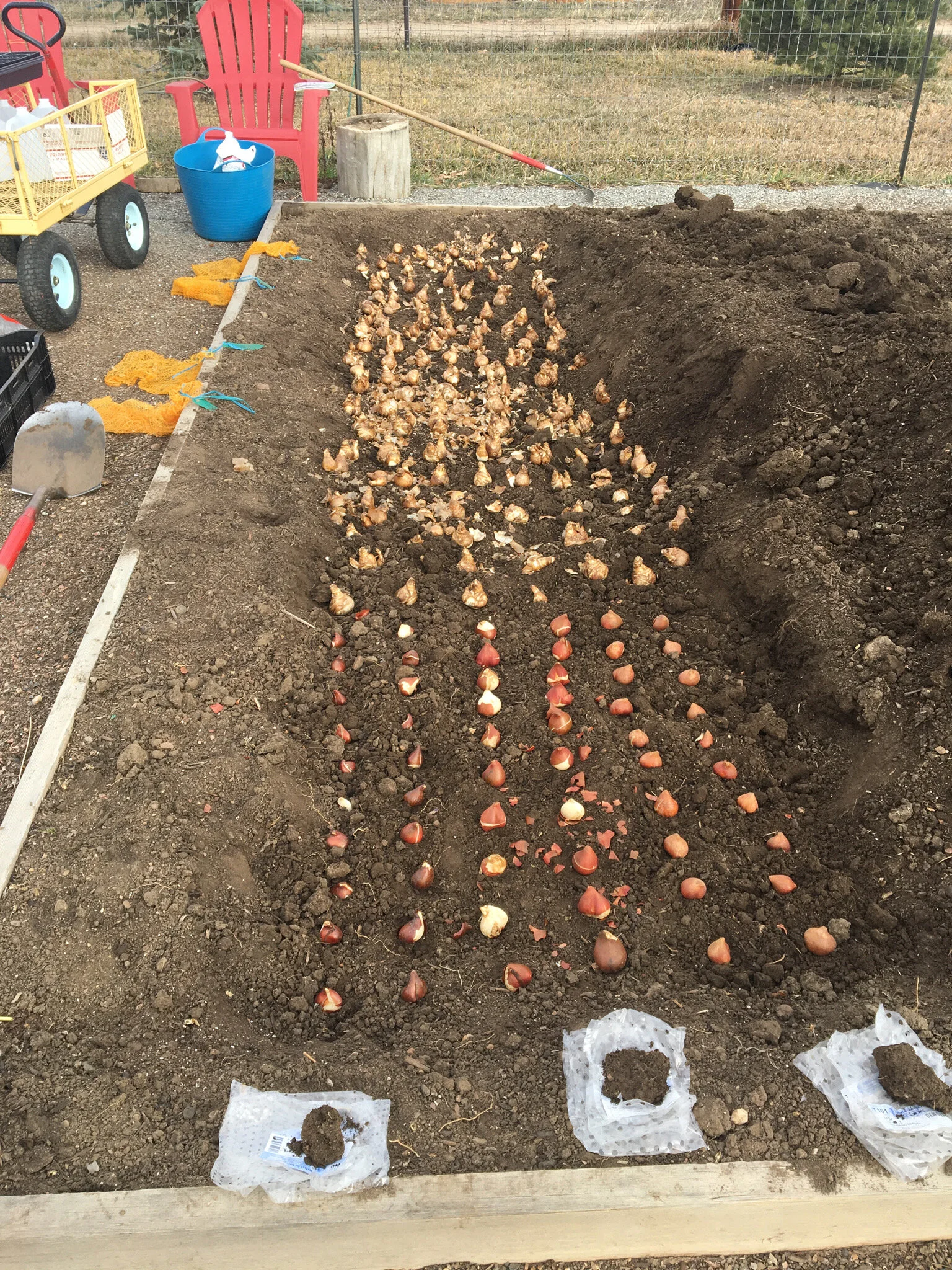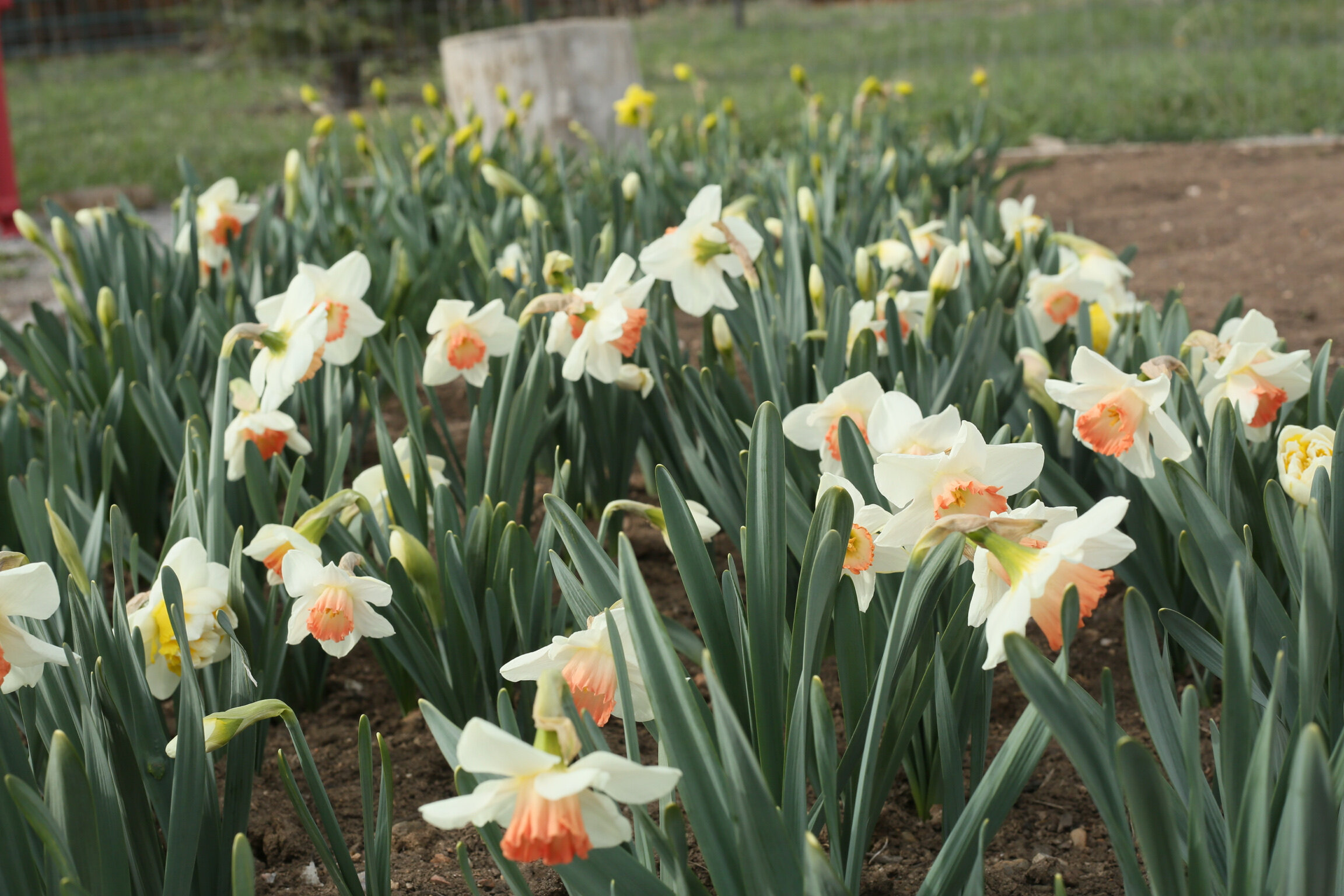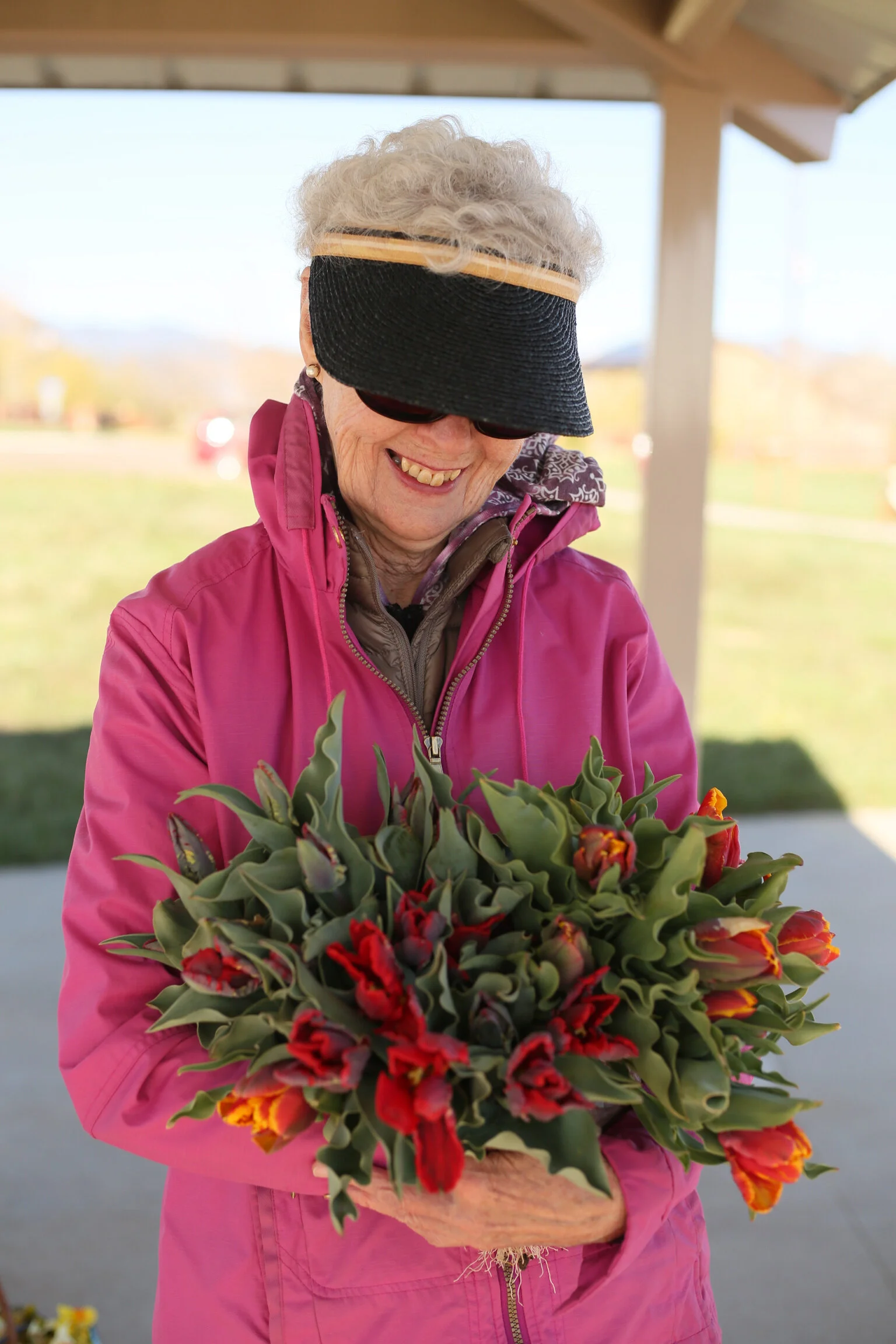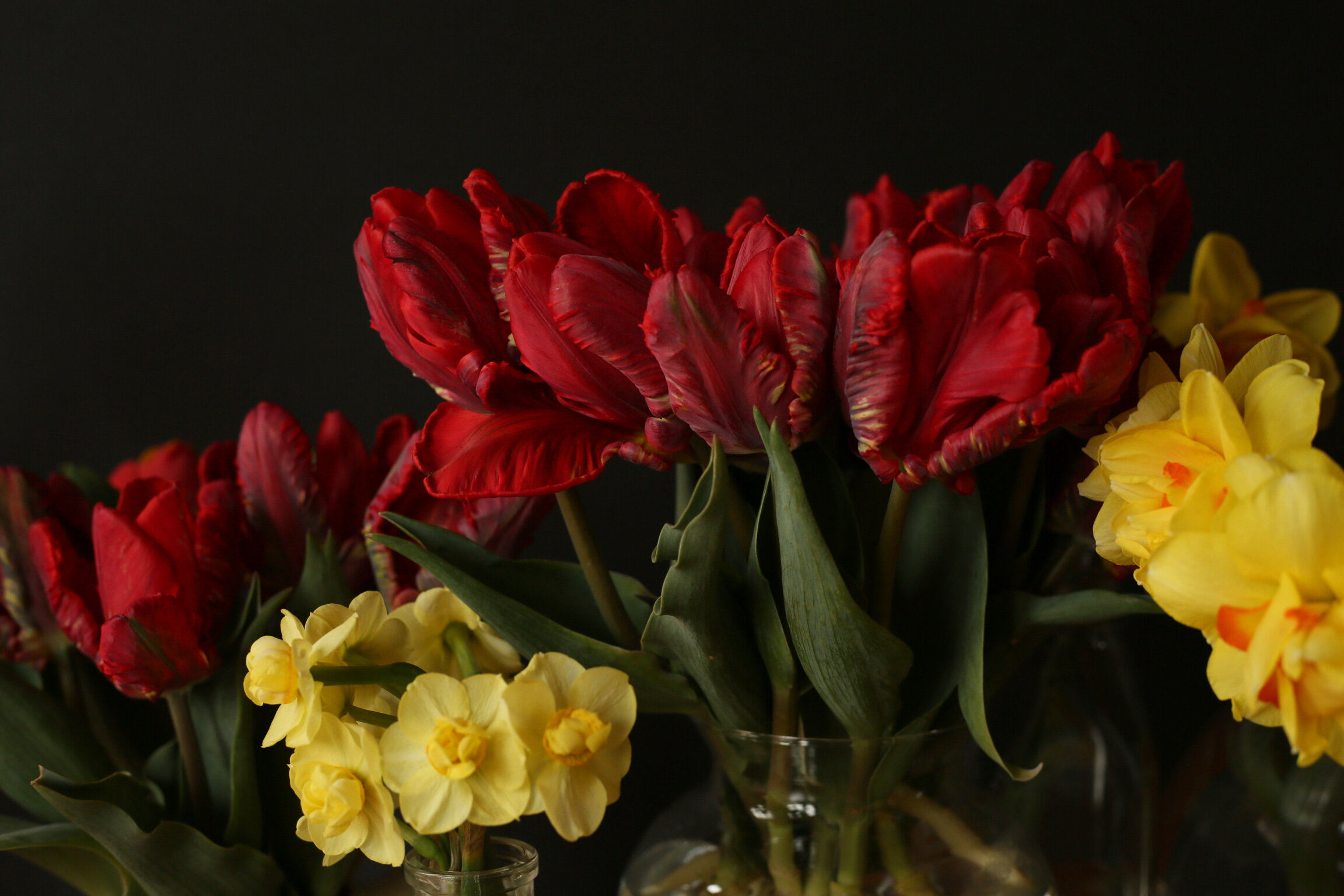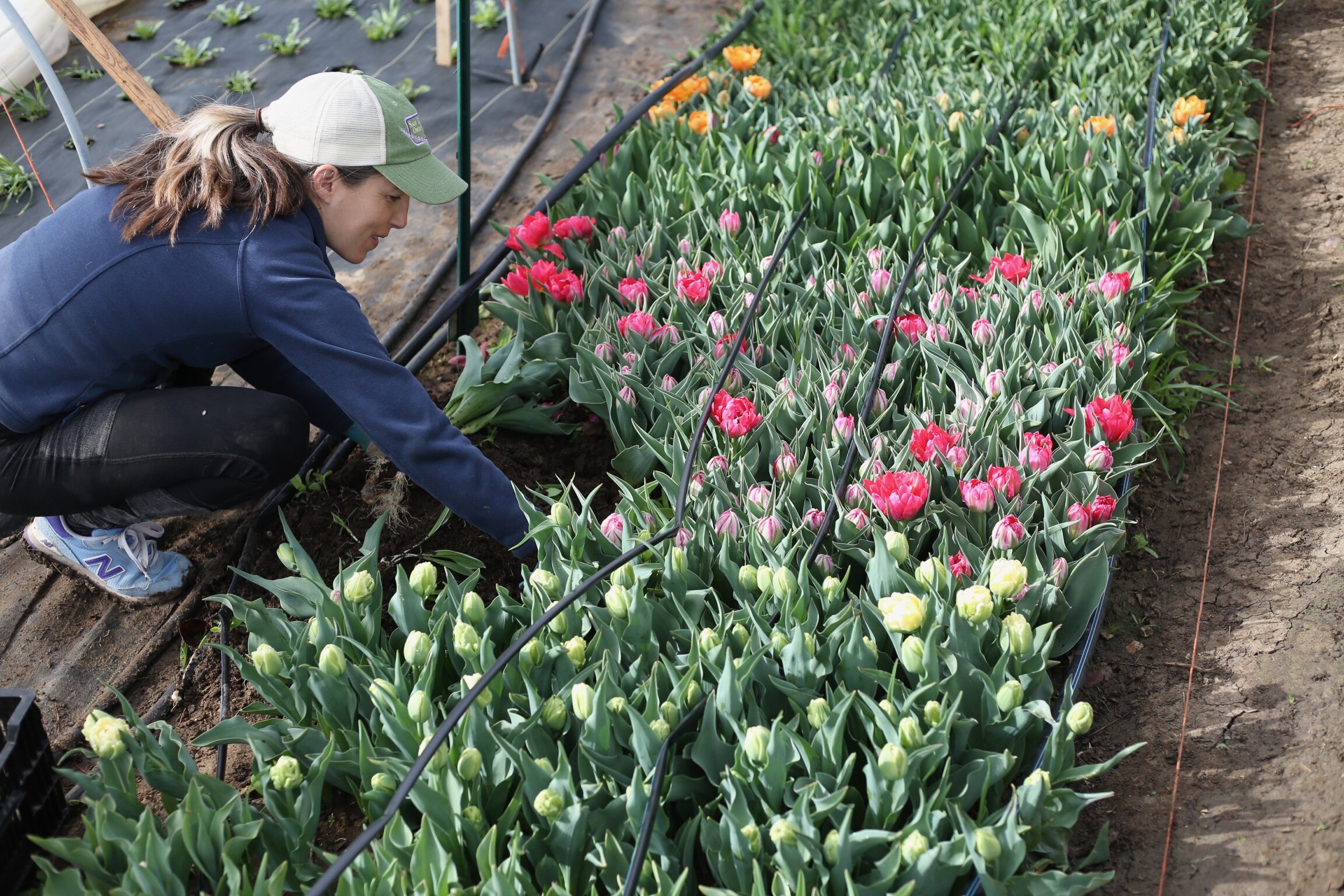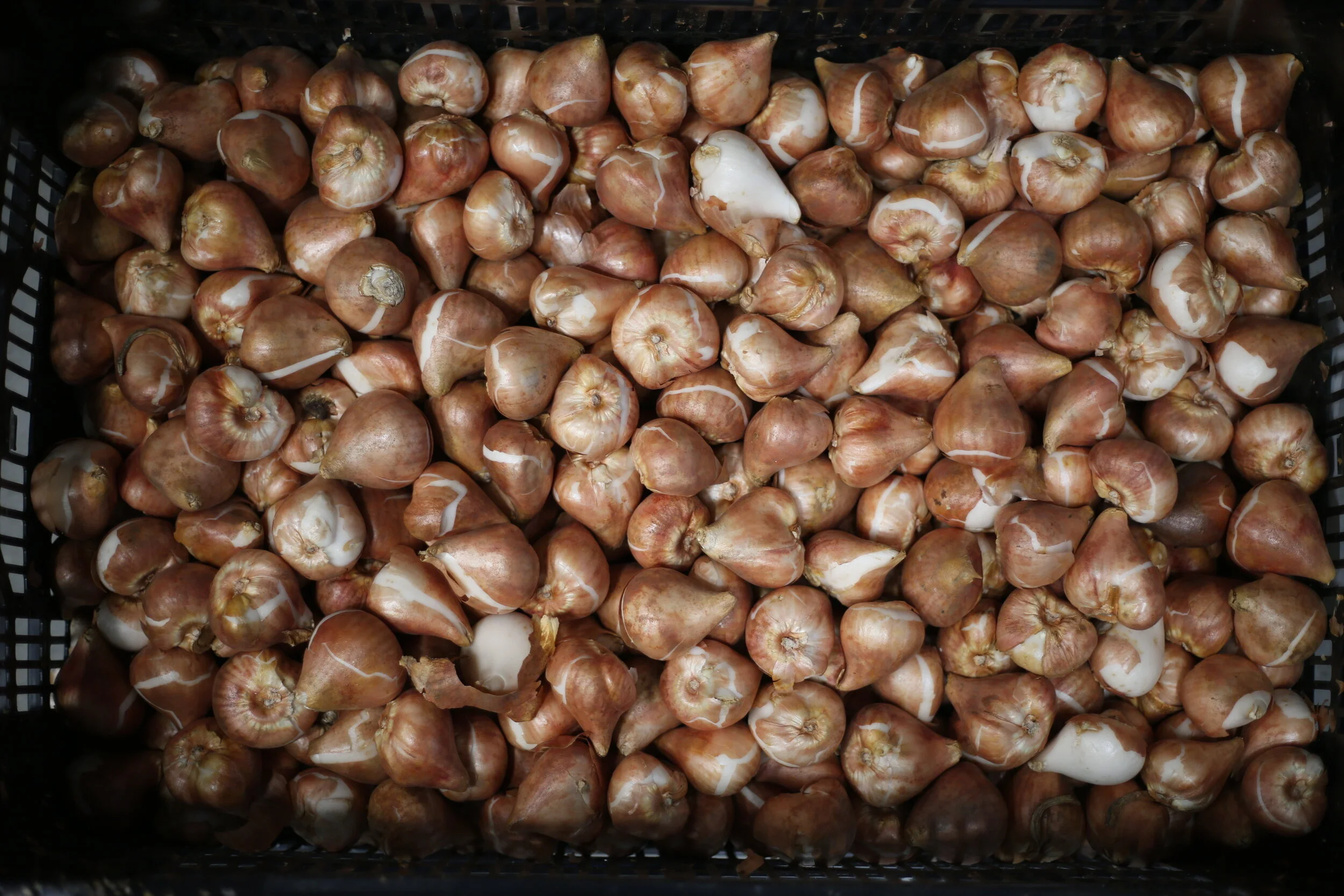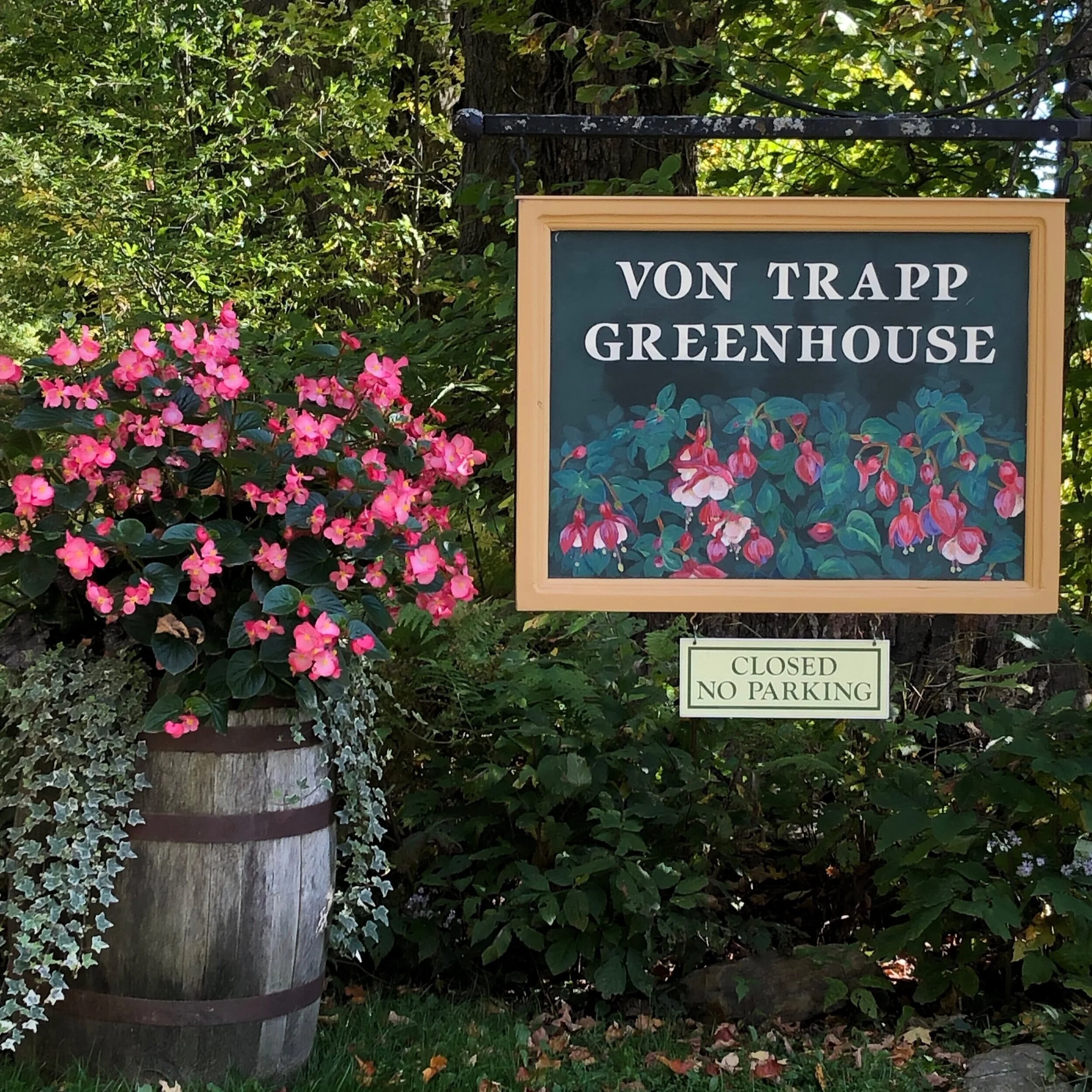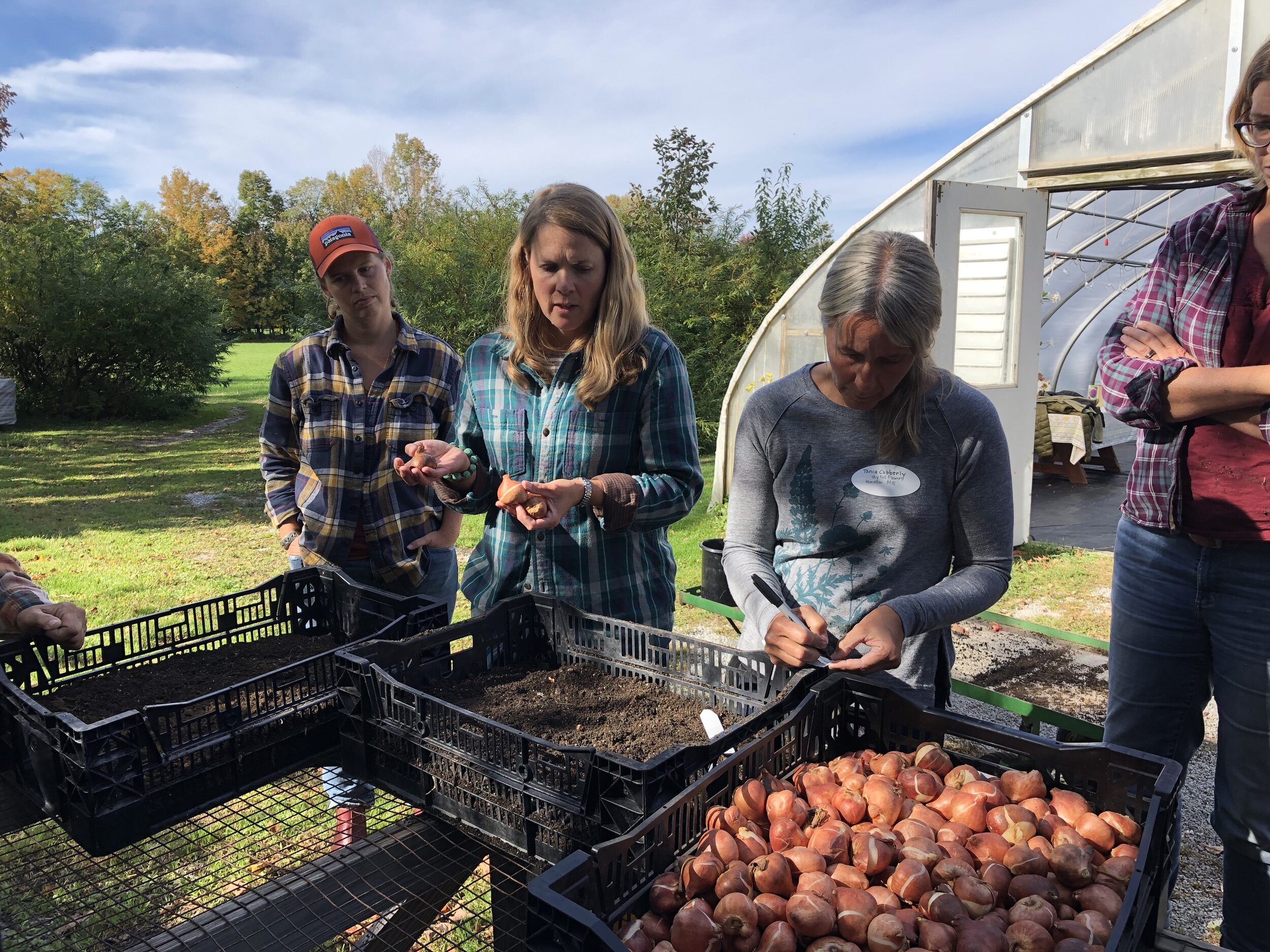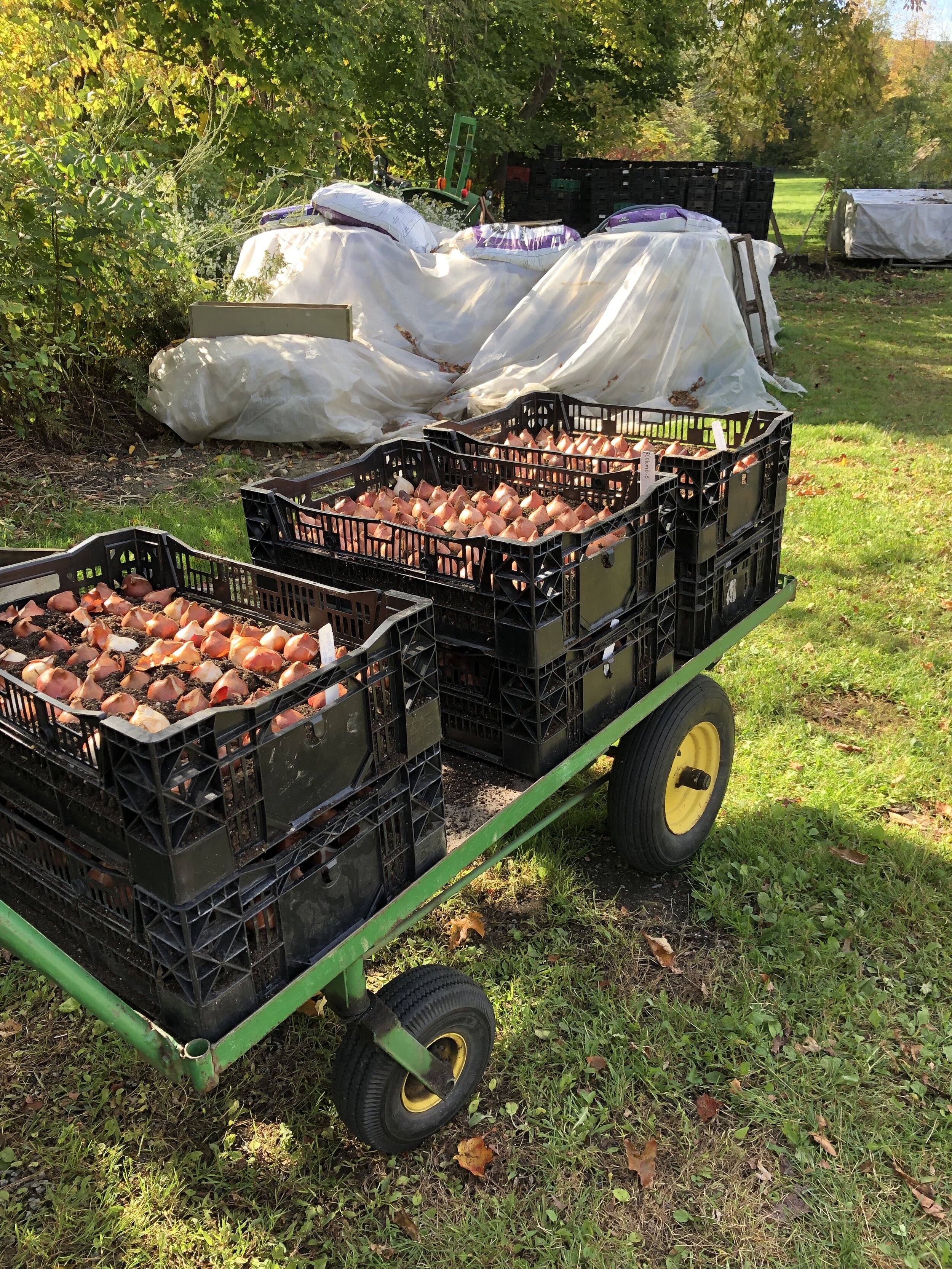Tulip Workshop Review
This fall I decided to attend a Tulip Forcing Workshop given by Emily of von Trappe Flowers. One of the main reasons I wanted to attend is because my Spring CSA was so successful this year. I sold more spring shares than summer or fall shares, and I gathered there is a general lack of locally grown tulips in Denver so I’m confident if I could grow more, I could sell them. Having product to sell this year from April – October quadrupled my sales from my first year where I only had product to sell from July – October. It is evident to me now that to make flower farming financially feasible, I must continue to extend my season.
Last year, I grew 4500 tulips and 3,000 narcissus in an open field in trenches without any cover. The narcissus were planted Oct 21, but the tulips weren’t planted until late November, which I now suspect was the reason some of them grew poorly. One of the most important things I learned is that the length of cooling time for tulips determines how well they bloom and their stem length. The narcissus were blooming by mid April, and tulips the first week of May through June. Even though they experienced a fair share snow when they were blooming, they still grew fine until the heat of June came which stopped them from growing altogether. One of my successes was purchasing a mixture of early bloomers, mid-season, and late bloomers. It made a noticeable difference, and allowed me to stagger when I needed to harvest, making my limited storage cooler sufficient.
A quick look back at how my tulip growing evolved:
2017 – planted 500 bulbs at community garden, which felt like a lot at the time. Sold nothing, just gave away to friends. It was a dry year, bulbs were planted too far apart, tulips hardly did anything. What you see below was my harvest.
2018 – planted 7,000 bulbs (4500 tulips/3000 narcissus) down two 70’ x 4’ rows. It felt super risky but I sold 95% of them. A few varieties were too late and died in the heat before them bloomed. I launched my first Spring CSA in February and was able to deliver 6 weeks of spring blooms in April/May 2019. Three weeks of unique varieties of Dutch narcissus, and three weeks of uncommon tulips like parrot, lily, double petals, and fringe. They got snowed on and required covering a few times, but all worked out.
2019 – 3,000 narcissus are still in the ground as I let them perennialize, and I’m in the process of planting 9500 tulips, 1500 mascari, and 12 hellebore plants (another type of bulb). This felt like a lot to order but when they arrived, it felt like not enough. And especially after taking the Tulip Workshop, I now wish I had ordered double. I’ll be experimenting with selling bulbs to CSA members and planting in crates to force them early. My first bulb sale is happening this coming weekend. If all goes well, I might consider selling more bulbs next year. And right after the sale, my very first tulipalooza will kick off where I’ll be planting all 9500 in one day with the help of friends.
von Trapp Flowers Tulip Forcing Workshop
Without giving away the knowledge Emily has gained over the years, and my financial investment to take the class, here are only a few highlights for those who are considering forcing bulbs. If you want all the nitty gritty, you’ll have to put Vermont on your schedule for next year.
Emily grows 100% of her tulips in crates so she can have more control over how long they are cooled, when they bloom, and also protect them from rodent pressure. She has found this to be so successful that she was able to leave her teaching career to fully commit to growing flowers…particularly tulips. She says she is able to sell way more tulips then any other flower throughout the rest of the year.
By growing in crates she is able to have product to sell from January all the way until mid-June, which is after they are typically done growing in backyard gardens. That means she is able to extend her season by 3-4 months! Since Valentines Day and Mother’s Day are the top flower buying days of the year, it would be great to have armloads of tulips for both of these days in particular. Unfortunately, to make that happen next year I would have had to already order 5c bulbs (precooled) so its not going to happen for this experimental season. I may still be able to force them for March, which would be a huge win in my book, but Feb is out of the question. Like most ordering schedules in the flower industry, to get the bulbs you want, orders need to be placed a full year in advance….so procrastinators be warned! This is not a joke.
Growing in crates requires proper infrastructure—a cooling area and a growing area. Emily enjoys the use of her family’s greenhouses, cellar space, and hoop houses, and is continually shifting bulbs from one spot to the next. For me, our infrastructure is not there yet so I have to get resourceful to make this work. I am planning to convert a pull behind trailer into an insulated cooling space, and I’m looking for space to rent in a greenhouse, or I’ll be growing them under lights in my garage (which does work apparently, according to Linda with Little Farmhouse Flowers).
Things that intrigue me about growing in crates:
- If you remember my videos on Instagram, I shared how I had to wash the tulips because there was so much clay stuck to the bulbs. This was the worst part because the water was freezing and it required so much labor. If I grow them in crates, I eliminate the need to wash all together. I would cut them as needed, and if I needed to ‘hold them’ until they were ready to be sold, I would just put them back into the cooling space.
- Less loss due to squirrels digging them up or rot from poor draining clay soil. There is nothing worse than seeing squirrels digging in your trenches or seeing water pool on your field.
- Spreading out the growing season to be over late winter. In Colorado, we have a lot of sunshine through the winter, mixed with cool air. In the spring, it goes from freezing to too hot which blows tulips open when their stems are still short. Maybe if they are grown in a greenhouse I can utilize the winter sun, while the air is cool.
- Being the first to market is always good in business so it would extend my season by 2-3 months, and longer in the future.
Things that make me nervous:
- Not having the right infrastructure makes this experiment risky. Tulips dry out quicker in crates, which could make them freeze in a make-shift cooling area. If they stay wet, then they won’t freeze and all will be okay, but Colorado is very dry.
- Purchasing 9500 tulips was a big investment. I know they will grow in the ground with mother nature doing most of the work but by trying to force them to bloom early, opens up the chance for human error and they could rot. Worst case scenario I would be out the money it cost to purchase the bulbs and let down my CSA customers that have pre-bought them (via Spring CSA).
Overall, I really enjoy growing tulips this year even with the extra work, so I am willing to keep learning and trying Emily’s methods. For this season, I’m planning to plant half in the field, and half in crates. This will cover my CSA at the very least, and if the forcing experiment is successful then I’ll have more to sell to designers, florists, and markets. There is potential and demand for unique spring flowering bulbs that are grown locally, and an opportunity to make an income during a time of year that is typically slow. Emily is down to earth, professional, and well organized which made for a productive tulip forcing workshop. I loved seeing her farm, connecting with other growers, and seeing first hand how she is forcing 80,000 bulbs in Vermont. There is just one thing you must know about her though…. don’t even think about asking Emily to sing ;)
Stay tuned to my social media outlets to see how my winter experiment goes. With any luck, we’ll have color in March.
Thanks for being here,
Gina

